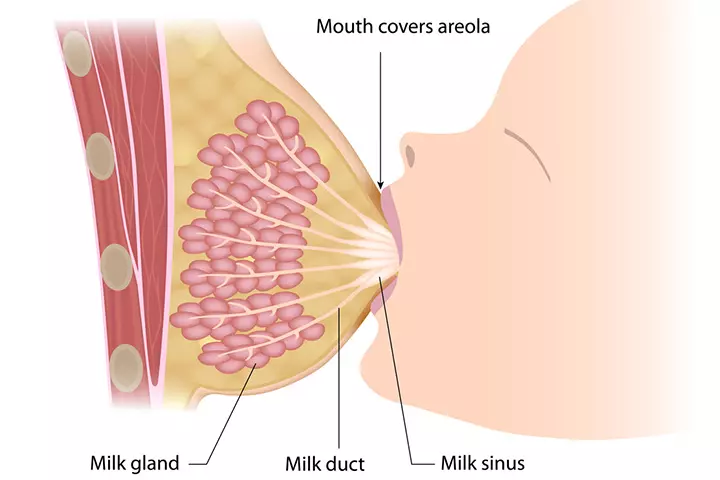

Image: Shutterstock
We take such great pain to give birth and such immense care that no harm befalls on our little darlings. But unfortunately sometimes things do go wrong where we least expect them. One such area is the overactivity of lactating glands – or in simple terms- overproduction of breast-milk.

Overactive let-down or increased force of milk flow is a common breast-feeding problem, but many moms actually consider it as a ‘good thing’ because, for them, it is simply more milk and more nutrition for the baby. But the consequences of over-active let-down can be risky. One such incident that surfaced recently in the social media talked about a mother’s nightmare when she realized that her baby had accidentally choked on breast milk.
Image: Facebook: bfmamatalk
Rebecca Taylor, the mum, says that it was ‘the scariest day’ of her life, when she called the ambulance after she saw her new-born struggling with his breath and almost going limp. It was devastating to see him with oxygen mask and tubes all over. When the baby started turning blue, Rebecca feared that probably the worst was going to happen. Thankfully, the baby was fine later on and there was no untoward mishap. Nevertheless, it is important to know more about this issue and take adequate steps to spread awareness about choking on breast-milk.
Overactive let-down can be also termed as Milk Ejection Reflex or MER. It is a hormonal issue wherein oxytocin hormone is produced more rapidly compared to prolactin hormone and results in excess and rapid flow (1).
Now if you are faced with such a problem, what should you do? According to the expert lactation consultants from the organization La Leche League, International and others in the field, there are a few things that you can follow to ensure that your baby is comfortably feeding even if you experience a let-down: (2)
1. Signalling Your Breasts Not to Make More Milk
When you are feeding your little one on one breast, put your palms on the other breast and press the nipple inwardly, towards your ribs for a few seconds. Repeat this process a number of times so that the counter force on the breast signals the body not to send any extra supply of milk in that breast.
2. Feeding from One Breast at a Time
At the time of let-down, the baby swallows a lot of air and fore-milk, which causes gas and upset stomach. The nutrition levels are also not optimum at such times. In that case, you can opt to provide the hind-milk, which is more wholesome. To do so, place your baby at one breast. When the milk is about to gush out, remove the baby and let the foremilk spray onto a towel or a breast pad. After that, latch the baby and continue feeding. Use the same breast for subsequent feeds, till it drains all the milk.
3. Check the Latch
Image: Shutterstock
Sometimes, if the baby isn’t properly latched to the breast, a lot of milk can accumulate in the baby’s mouth and cause choking. It is best if you can check if the baby has latched properly and the nipple deep in their mouth. Ideally, when the baby is properly latched, the milk flows straight to the throat and the baby learns to manage the flow.
4. Latching Position
An upright or ‘uphill’ position is better for the baby to defy the gravity of the milk flow. If the baby is placed on top of the mother, while the mum reclines, the baby will have a better chance to back-off and move-away if the milk comes out with too much force.
5. Get Expert Help
If you have been facing persistent problems regarding feeding or let-downs, don’t shy away from getting help. Lactation consultants can take a holistic view of your condition and offer help.
Lactation problems are common, and so are the solutions. So be aware of the feeding pattern of your baby and if you experience let-down too often, don’t forget to take necessary steps to avoid any complications. Happy breast-feeding!
Community Experiences
Join the conversation and become a part of our nurturing community! Share your stories, experiences, and insights to connect with fellow parents.














